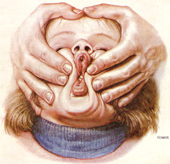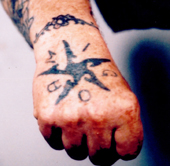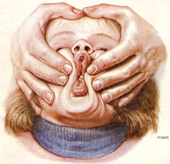(Wien, im Dezember 2010) Laut Wikileaks ist die Situation der russischen Gefängnisse kaum zu reformieren. Das ist die Erkenntnis des Lageberichtes, den der amerikanische Botschafter in Moskau William J. Burns am 27. Februar 2008 in seine Heimat in das State Departement kabelt. Der Bericht ist sehr aufschlussreich, sauber gearbeitet und gibt Einblick in das russische, zivile Gefängnissystem (nicht erhoben: die Militärgefängnisse). Botschafter Burns, der zahlreiche Gefängnisvisiten vornahm und sich vor Ort ein Bild von der Lage machte, sagt, dass das Gefängnissystem die Gesamtlage Russland gut wieder spiegle: Weite Distanzen, die zur „physischen Isolation“ vieler Gefangenen von ihrem Heimatort führen, rauhe klimatische Bedingungen und viel Bürokratie. Er sagt, dass nur in einem Land mehr Häftlinge als in Russland in der Welt einsitzen: In den USA. In Russland sitzen derzeit 889.600 Personen in Haft. Im russischen Gefängnsissystem werde so gut wie keine Massnahme mit Hinblick auf Resozialisierung gesetzt, alles richte sich auf das Moment der Bestrafung. Misshandlungen seien zahlreich und immer wieder tauchten geschmuggelte Videos auf, die das belegten. Der Gesandte analysiert: Wohl ist die Infektionsrate bei ansteckenden Krankheiten in russischen Gefängnissen höher als in Freiheit, aber überraschenderweise beträgt die Todesrate unter Männern in russischen Gefängnissen nur ein Drittel von der Todesrate in Freiheit, was Burns auf den exzessiven Alkoholkonsum russischer Männer und die tödliche Gefahr des Straßenverkehrs zurück führt. 700 Gefängnisse gibt es in Russland, so der Bericht. Menschenrechtsgruppen gibt es auch, sie bekommen manchmal auch vor dem EMGR Recht. Dennoch ist das Gesamtsystem schwer reformierbar, so Botschafter Burns.
Eine Gesamtanalye des sehr interessanten US-Kabels, das einige neue Details enthält, nach den Weihnachtsferien! Grundsätzlich: Man sollte mit den Wikileaks-Berichten sorgsam umgehen. Weder gibt es einen Grund, das Auftauchen der Berichte zu verteufeln. Sie enthalten viele wertvolle Einsichten darüber, was los ist in der Welt. Auch wird nach Ende der Gesamtveröffentlichung der Berichte eines eintreten: Manche Botschafter werden anders gesehen: Nicht als Buffetjäger, die in Luxus und Ausschweifung im Gastland leben, sondern als kluge politische Analytiker mit wachem Auge. Dass es oft um „amerikanische Interessen“ geht, ist klar. Doch dieses „cable“ zeigt, dass der Botschafter eigentlich Arbeit macht, wie es Menschenrechtsgruppen auch tun: Sich einen Überblick verschaffen und diesen in gebundener Analyse berichten. Die Bezeichnung „confidential“? Ist nach Ansicht dieses Journals nicht nötig. Denn warum soll nicht jeder darüber Bescheid wissen, dass ein Land 700 Gefängnisse hat, in dem knapp 889.600 Personen inhaftiert sind. Das ist eine kritische Größe, die aus confidential eigentlich open source macht, da das öffentliche Interesse überwiegt.
+++
Hier das Kabel im Original, das Wikileaks am 26. Dezember 2010 online stellte.
C O N F I D E N T I A L MOSCOW 000531
SIPDIS
E.O. 12958: DECL: 02/27/2018
TAGS: PHUM PGOV TBIO RS
SUBJECT: RUSSIAN PRISONS
REF:
A. 07 MOSCOW 4543
B. MOSCOW 325
C. MOSCOW 378
Classified By: Ambassador William J. Burns for reason 1.4(d).
1. (C) Summary: The Russian prison system combines the country’s emblematic features – vast distances, harsh climate, and an uncaring bureaucracy – and fuses them into a massive instrument of punishment. Russia imprisons a greater portion of its population than almost any other country in the world (second only to the U.S.). In contrast to other Western countries, the system is foremost focused on punishment, not rehabilitation, and while statisics are difficult to compare, produces a lower rate of recidivism. Recent prison riots, new prisoner shock tactics, and smuggled videos of prison mistreatment have highlighted the cruelties and corruption in the system. Health conditions in Russian prisons are poor and infection rates for contagious diseases are much higher than in the general population, but surprisingly the mortality rate for men in these prisons is only one-third the rate on the outside – a statistic that says much more about the dangers of alcoholism and road safety than it does about healthy living behind bars. Reports of abuses in the prison system have been answered with calls for reform, most recently in the Human Rights Ombudsman’s annual report and by the President’s Human Rights Council. While NGO activists such as the embattled Lev Ponomarev praise the work of Lukin, the insurmountable challenges posed by the physical and cultural nature of the prison system mean that efforts to improve conditions or to alter the character of the system from punishment to rehabilitation are likely to produce only superficial improvements. End summary.
——————————
Structure of the Prison System
——————————
2. (U) The Federal Service for the Execution of Punishments (FSIN), part of the Ministry of Justice, administers more than 700 Russian jails and prisons across the country (this cable does not address the military prison system operated by the Ministry of Defense). There are four levels of incarceration as prisoners move through the justice system: temporary police custody facilities for those held pending charges; pretrial detention facilities (SIZOs) for those charged with crimes; lower-security correctional labor colonies (ITKs); and high-security prisons for more dangerous prisoners and for those who violate the rules of ITKs. Convicted juveniles serve their sentences in „educational labor colonies“ (VTKs) for juveniles, in almost all cases separate from adult prisoners.
3. (C) According to Lev Ponomarev, who recently established the NGO „For Prisoners‘ Rights,“ the authorities use a two-tier system of administration. The prison officials and the guards protect the perimeter of the facilities and provide the upper layer of security, but then they elevate select prisoners to act as internal enforcers among the other prisoners. These elite prisoners receive privileges and protections in return for enforcing a brutal form of order within the prisons. Ponomarev called this a „low-risk ghetto system“ for the guards. „If one of their enforcers gets killed by another, they can just promote a new one. Maybe even the one that killed the last boss.“ Ponomarev told us that the prisoners have little choice, and cited an example of one member of the National Bolshevik Party who was sent into solitary confinement for one year for refusing to act as an enforcer.
4. (C) This system of using prisoners to enforce discipline and order was formally established by the Ministry of Justice in 2005. According to William Smirnov, a member of the President’s Council on Human Rights, the MOJ formalized a system that had long existed. Smirnov defended the system, telling us that „It was not a bad idea, but it was poorly implemented.“
5. (C) According to Viktoriya Sergeyeva of Prison Reform International (PRI) in Moscow, the source of the problems is the Ministry of Justice and the FSIN. The low pay and low prestige of prison administrators and guards, combined with a lack of oversight and accountability, have created an abusive system rife with cruelty and corruption. Guards use violence, threats of violence, or the lack of protection to extort prisoners. Other guards take bribes for allowing relatives to smuggle in goods to prisoners. Sergeyeva said that prison administrators knew what was occurring and probably received a cut from the guards.
———–
The Inmates
———–
6. (U) According to FSIN statistics, as of July, there were approximately 889,600 people in the custody of the criminal justice system, including 63,000 women and 12,100 juveniles. This rate of 630 prisoners per 100,000 citizens is second in the world only to the United States (702 per 100,000). The number of prisoners has increased in recent years. Compared to July 2005, the total number of prisoners has increased by 101,000 ( 13 percent), the number of women prisoners increased by 15,000 ( 31 percent), and the number of juvenile prisoners decreased by 2,400 (-17 percent). Not surprisingly, most prisoners are poorer and less educated that the general population; only 1.3 percent of male prisoners have university degrees, compared to 22.5 percent of the general population, and nearly 60 percent of convicts were unemployed prior to their arrests. Seventy percent are unmarried.
7. (C) During the last year, there have been scattered reports of uprisings in prisons, including a revolt and jailbreak at the youth prison in Togliatti (Samara Oblast). According to Ponomarev, this revolt was triggered by the transfer of a large number of 20 year-old prisoners to an adult prison. By law, he explained, convicts sentenced before they turn 18 are sent to youth prisons, where they may stay until they turn 21, at which time they are transferred to an adult prison. Other protest actions, such as hunger strikes, are still common, but Ponomarev described a new shock tactic whereby prisoners will en masse slice open a vein on their arms or neck in protest of mass beatings. While the poor conditions in the prisons have not further deteriorated in the past few years, the prisoners are becoming more organized. „Smuggled cell phones are enabling prisoners to communicate better and to coordinate mass action,“ said Ponomarev.
——————————————— –
Distance, Climate, and Isolation as Punishment
——————————————— –
8. (U) The prison system incorporates Russia’s vast distances and harsh climate into the system of punishment. Although the law states that prisoners should not be incarcerated outside the region where they lived or were convicted unless local prisons are overcrowded, this rule is routinely disregarded, according to Sergeyeva. Many prisons are located in isolated regions with harsh climates and use buildings that are not adequately heated, cooled, or ventilated. Often, the transfer of prisoners far from their homes is due to space concerns, but it is also used as a form of punishment for troublesome prisoners. The best known example of this treatment is Mikhail Khodorkovskiy, who is imprisoned in Chita, nearly 3,000 miles from his native Moscow. His associate, Platon Lebedev is imprisoned nearly 1,200 miles from Moscow above the Arctic Circle. The Moscow-based Open Health Institute (OHI) reported that this physical isolation leads to personal isolation, and that between 50 and 80 percent of all prisoners had not received any visitors in the prior three months. This isolation from family and friends has negative repercussions on future rehabilitation and reintegration into society.
9. (U) Due to the nature of this federal (not regional) system, juveniles and women are more likely to be located far from their homes. For example, there are only three prisons in the country for the 1,000 girl prisoners – one in Tomsk for all of Siberia and the Far East, one in Ryazan, and one in Belgorod. This great distance makes it almost impossible for families to have regular contact with their children.
10. (U) Prison guards still rely heavily on traditional forms of violence and deprivation to maintain control. Solitary confinement for long periods (sometimes longer than one year) while illegal is reportedly used, and some isolation cells are too small for the inmate to fully stretch out lying down. In what Ponomarev said was a typical incident, he showed us a video filmed by a guard and sent anonymously to For Prisoners‘ Rights. The video, since posted on YouTube, shows prison guards marching out prisoners in a Sverdlovsk Oblast prison past dogs. Some prisoners were then stripped to the waist, stretched out over tables, and then beaten with billy clubs by the guards. „This is routine behavior,“ said Ponomarev, „what is different is that it was recorded.“ REN-TV aired short segments of the video during an evening newscast. A recent news report from Kalmykiya claimed that after a new warden was appointed to a local SIZO, the Ministry of Justice’s special forces visited the prison and beat up every detainee saying that it was a greeting from the new warden. Ponomarev said that such reports surfaced relatively rarely, and that prison administrators will continue to exploit their remote locations and be able to ward off scrutiny from the press, NGOs, or government watchdogs.
11. (U) According to Sergeyeva, the recidivism rate in Russia is only 36 percent (compared to more than 50 percent in the United States or the United Kingdom). She attributed this low number to a combination of factors, including the longer average Russian prison term which keeps men in jail and a genuine fear of returning to prison. (Note: It is difficult to evenly compare the U.S. and Russian statistics since U.S. conditions vary from state to state and from the federal prisons. End note.) „We still have the problem that when these prisoners return to society, they have no system of assistance. The federal budget finances the prisons and the punishment, but they leave it up to regional and local government to finance the rehabilitation and health costs. They break them, and then we own them.“
—————–
Health Conditions
—————–
12. (U) Conditions in pre-detention facilities (SIZOs) are generally worse than in the prisons. The prison system does not have enough SIZOs to handle the large number of the accused, and overcrowding and squalid conditions are widespread. Many SIZOs lack toilets, and inmates use buckets. In a well-documented case at the European Court of Human Rights (Mayzit v. Russia, No. 63378/00), the court found Russia in violation of the Prohibition of Inhuman or Degrading Treatment by placing Yuriy Mayzit in severely overcrowded cells with less than two square meters per person (the Russian legal minimum is four square meters/person, the European minimum is seven square meters/person). According to Human Rights activists and the Ombudsman Lukin, similar conditions (or worse) exist throughout the system.
13. (U) Health conditions in prisons are poor. Overcrowding is common, the infection rates of resistant TB and HIV/AIDS are much higher than in the general population, and even though the TB infection rate has greatly decreased since 1999, the active TB rate among prisoner is still five times higher than in the civilian population (Ref A). According to the Open Health Institute (OHI), there were 41,500 inmates with HIV/AIDS in 2006, approximately ten percent of the cases in the country. Prisoners with active TB are segregated from the regular prison population and are given rigorous medical treatment, but because the treatment of normal TB lasts up to 12 months and even longer for drug-resistant TB, many prisoners are released before they complete treatment and an estimated 40 percent fail to continue their treatment on the outside. A 2005 study by OHI revealed that former prisoners carry these infections back to the general population upon
their release, and they account for an estimated 20 percent of new TB cases in the civilian population.
14. (U) OHI Deputy Director Aleksey Bobrik reported a counterintuitive statistic that even though the mortality rate from infectious diseases was greater in prisons than in the general population, the overall mortality rate for men in prison was only one-third that of the general population. Bobrik and the other OHI researchers attributed this to the absence of binge drinking, car accidents, and industrial accidents in prison. Long-term health for inmates, however, suffers greatly as the poor nutrition, stress, and disease manifest themselves later in life.
———————–
First-Hand Observations
———————–
15. (SBU) Embassy and Consulate employees have visited several jails and prisons across Russia and report that conditions are generally poor. In the Kholmsk pre-trial detention center on Sakhalin Island, the facilities are literally crumbling, it is dangerous to walk the hallways, and the dark living quarters lack every amenity. One American detainee was initially denied a bed, and his health deteriorated noticeably during the weeks he was held there.
16. (SBU) The facilities that consular staff see are generally better than the prevailing living conditions, according to prisoners. Consular officers generally will meet with prisoners in a waiting room, sometimes under a guard’s watch, but often alone in a room. We have the greatest access to the prison in Mordovia, which is used for foreign citizens, but we cannot say that it is typical of the system. An American citizen convicted of pedophilia used money and goods sent from the outside to buy the favor and protection of the prison commandant. He had no complaints about threats from other prisoners, which is not typical of Russian prisons where pedophiles are reportedly at the bottom of the prisoner caste system.
17. (SBU) At the women’s prison in Mozhaisk (Moscow Oblast) the Embassy and a visiting DOJ delegation were given a tour of the prison housing facilities and clothing factory, and then treated to a bizarre fashion and talent show by the inmates. Eleven of the 43 women’s prisons in the Russian Federation allow inmates to have children under age three to live on the prison grounds, and women in the other prisons who become pregnant are transferred to prisons that allow children. Only two, Mozhaisk and Mordovia, allow mothers to live and sleep in the same rooms with their young children. At age three, the children are moved to family members on the outside or to orphanages. The facilities at Mozhaisk were clean, well kept, and the factory where prisoners produced uniforms for the military, police, and other government workers appeared to be safe, well lit, and well run.
——————————————
Oversight and Efforts to Reform the System
——————————————
18. (C) Human Rights Ombudsman Vladimir Lukin told the Ambassador in a February 7 meeting (Ref B) that prison conditions were one of the most important issues for him, but that he had difficulty gaining unfettered access to the prisons and that prison authorities were the main obstacle he faced in addressing prisoners‘ human rights complaints. Lukin said that the FSIN was slowly improving conditions, and that new construction fixed many of the problems of sanitation and overcrowding.
19. (SBU) On February 14, Lukin issued his 2007 Human Rights report for Russia which reproached the FSIN for the deplorable conditions in the prison and for their lack of cooperation in addressing the abuses. Like the 2006 report, the 2007 report focuses heavily on abuse in the prison system, and Lukin noted that almost 20 percent of the total 15,000 complaints that his office received last year were reports of ill treatment in the prisons. Lukin wrote that his office had investigated approximately half of the prison complaints but that he was often stonewalled by prison authorities in getting evidence. According to Lukin, fewer than 150 of the 1,500 cases he had brought to the attention of prison officials resulted in any corrective action.
20. (SBU) Lukin proposes several reforms that would address problems in the system, foremost among them being the expansion of parole, which would ease the overcrowding of the system, and change the focus of the prison system from punishment to rehabilitation. He also proposes minor changes, such as moving the prison hospital system out of the Ministry of Justice and into the Ministry of Health. Lukin noted that Russia already had adequate legislation to address many of the abuses, such as keeping prisoners near their home region or providing them with proper medical care; the problem, however, is that the FSIN often disregards the law.
21. (C) Ponomarev and PRI’s Alla Pokras both praised the work of Lukin and Ella Pamfilova, the Chair of the Presidential Council on Human Rights, but said that the problems in the system were too great and too severe for them to handle. Pamfilova told the Ambassador on February 11 that she had been thwarted in her reform efforts by the Ministry of Justice (Ref C). Ponomarev noted that Putin met with Pamfilova on January 11 to discuss problems in the prisons, but that he offered nothing substantive. Putin was quoted saying „The situation (in prisons) has been changing slowly but surely, largely through consistent and systematic efforts by human rights organizations.“ Although Ponomarev agreed that human rights groups were doing most of the work to reform the system, he disagreed that the situation was improving, or that human rights organizations could do this work by themselves. „We can shine a light on this situation, but the government runs the prisons — neither we nor Lukin himself can even gain access to the 40 worst ‚torture prisons.‘ How can he honestly expect that we could possibly change this system?“
22. (U) On February 22, a Moscow court acting on a complaint by FSIN Director Kalinin filed a suit against Ponomarev for defamation. The suit is based upon a November 2006 interview with Regnum.ru where Ponomarev called FSIN Director Kalinin the „author“ of the system in which select prisoners enforce order and discipline on others. Ponomarev also described a network of 40 „torture prisons“ and alleged that torture, beating, and rape (or the threat thereof) were used to extract confessions and control prisoners. The prosecutor’s complaint did not take issue with Ponomarev’s characterization of the system or the allegations of torture in the prisons, but focused instead on the fact that it was a Ministry of Justice decree that established the system, not Kalinin himself. If found guilty, Ponomarev faces up to three years of first-hand experience inside the prison system.
——-
Comment
——-
23. (C) A system as vast and entrenched as the Russian prison system will be difficult if not impossible to reform. The nature of the system, which has not substantively varied as it has evolved from tsarist prisons to the gulag to today’s system, nurtures the spread of disease, abuse, and corruption. Observers agree that the combination of distance, isolation, corruption, and general indifference to the plight of convicts combine to create a system that is brutal and will resist attempts to reveal its inner workings, or to change it.
BURNS (Botschafter)
+++
Mehr über Russland auch hier, auf der Schwesterwebseite „Café Blaulicht“ (ältere Berichte vom Wiener Russisch-Dolmetsch Mag. Morgner):
Matthias Morgner über russische Gefängnisse: Kultur der Korruption (16. Mai 2006)
sowie:
Matthias Morgner über: Russen-Häftlinge und Drogen (12. November 2008)
Marcus J. Oswald (Ressort: Justizanstalten, International, Russland)

















